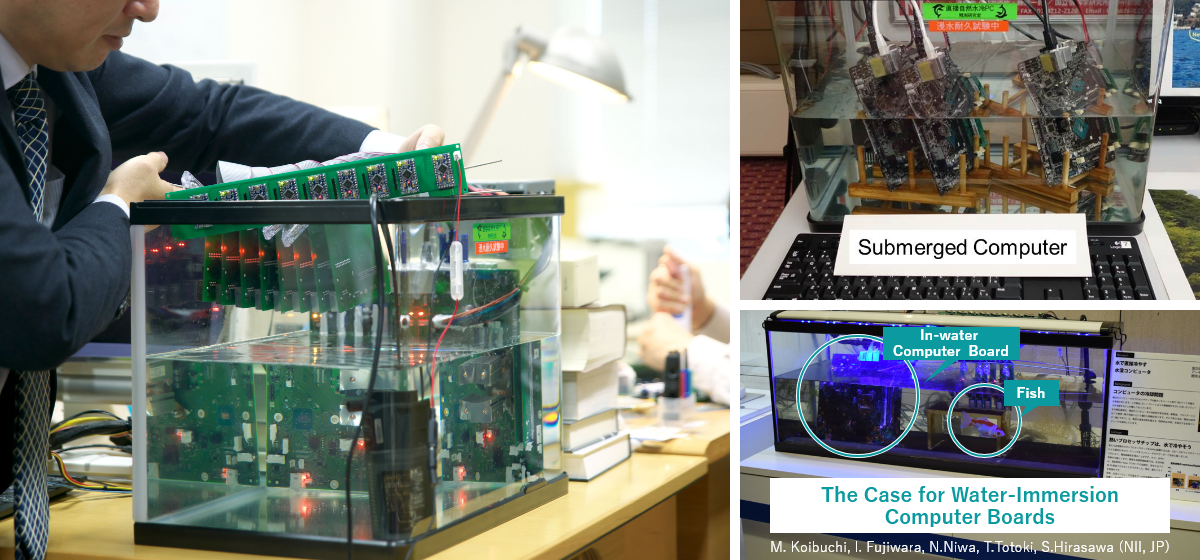As the power density increases in a processor chip, a primary concern for designing a high-power processor becomes heat dissipation, which limits power consumption due to enforced temperature thresholds. Computers have been air-cooled. However, liquid coolants (Fluorinert and Mineral oil) have been used successfully in recent some processor products. These coolants, due to thermal conductivity much higher than that of air, make it possible to increase chip power consumption without violating operating thermal constraints. Thus, we present yet another liquid cooling, namely a water-immersion method. Water-immersion cooling is attractive due to (i) high thermal conductivity, (ii) possibly direct immersion cooling, (iii) low safety concern. Existing liquid coolants have the advantage of providing electric insulation because water, except pure water provides no electric insulation. We explore in-water computer prototypes that rely on an um-film insulation coating for electric isolation.




